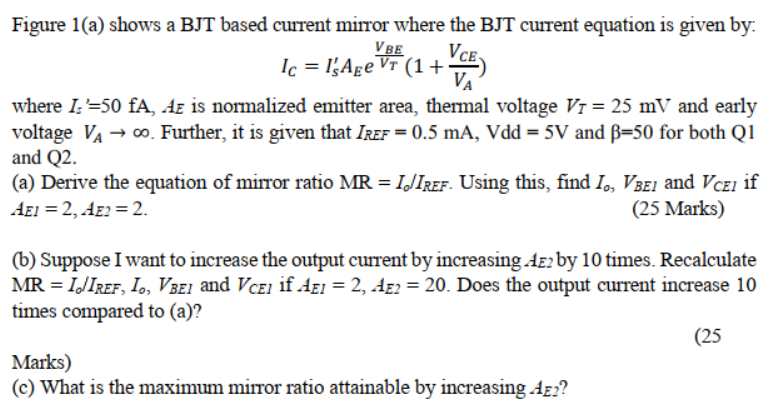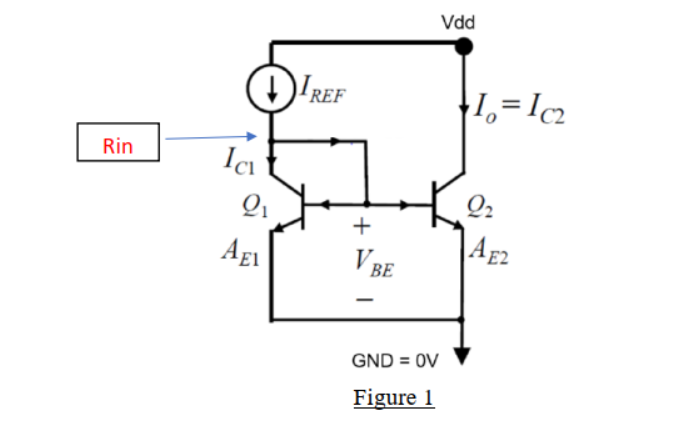current mirror ratio increase answers and explanation
Current Mirror Ratio Increase Step by step Solution with Explanation
Your question:


Now, draw the AC small signal model for this same circuit in Figure 1 and find an algebraic expression for the input resistance, Rin, including the effect of V.4. Evaluate the value of Rin using the parameters given in part 1(a) and considering V₁ = 100 V1.
Current Mirror Ratio Increase Answers and Explanation
Mirror Ratio Calculation and Explanation
Equal Base-Emitter Voltages: Due to the close connection between their bases, the base-emitter voltages (V_BE) of Q1 and Q2 are approximately equal.
BJT Current Equation:
A_E: Emitter area
V_BE: Base-emitter voltage
BJT current equation for Q2: Ic2 = I_S2 * A_E2 * exp(V_BE2 / V_T) ≈ I_o (where I_S2 is the saturation current of Q2 and I_o is the output current)
Since V_BE1 ≈ V_BE2 (assumption 2), we can equate the exponential terms of the BJT equations for Q1 and Q2:
Explanation:
The mirror ratio (MR) depends on the ratio of the emitter areas (A_E1 and A_E2) and the saturation currents (I_S1 and I_S2) of the transistors. Ideally, the saturation currents should be equal for matched transistors. In this case, the mirror ratio simplifies to:





